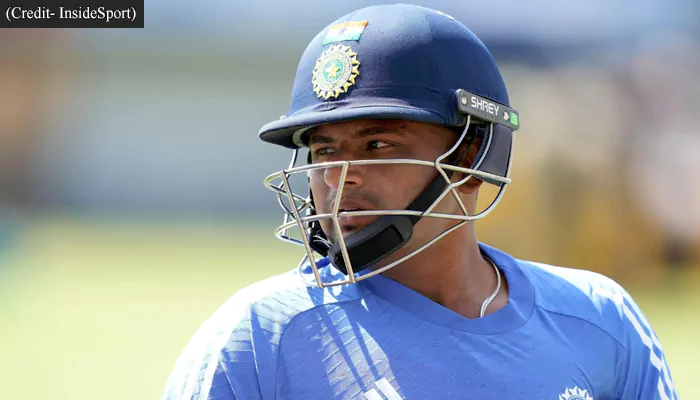Australia Ends India’s Four-Decade Long Streak: What Happened 46 Years Ago?
- Sanchari Das
- 11 months ago
- 4 minutes read

The recent defeats have exposed cracks in India's batting and bowling departments
India's recent Test cricket woes mark a rare chapter in their illustrious history. Losing three matches in consecutive series for the first time since 1976/77 has drawn parallels to one of the darkest phases in Indian cricket. A 0-3 loss to New Zealand at home shattered their 12-year dominance. This was followed by a 1-3 Border-Gavaskar Trophy defeat, a tournament India hadn't lost in a decade. To understand the magnitude of this decline, we revisit the 1976/77 series against England and the following 1977/78 tour of Australia—two eras that defined resilience despite failure.
🚨India 🇮🇳 loses BGT after 10 years, lost at home after 24 years.
— Sumit Kapoor (@moneygurusumit) January 5, 2025
India is now out of WTC Final contention.
Where did we go wrong ? #INDvAUS pic.twitter.com/vOj1EX9R4X
The 1976/77 series: England's dominance in India
Led by Tony Greig, England demolished India 3-1 on home soil. It was a masterclass in strategy as England's batters and bowlers negated the famed Indian spin quartet of Bedi, Prasanna, Chandrasekhar, and Venkataraghavan.
The series opener in Delhi set the tone. Dennis Amiss's 179 and John Lever's devastating 10-wicket haul gave England an innings victory. Bob Willis's fiery 5/27 and Greig's patient century in Kolkata crushed India by ten wickets. Chennai saw the hosts slump to their lowest home Test total—83—on a fast pitch, with Lever and Derek Underwood leading the charge.
Though India fought back in Bangalore, thanks to Chandrasekhar and Bedi's spin heroics, the series was sealed in favour of England with three commanding wins. Lever's 26 wickets at a remarkable average of 14.61 became a series-defining contribution.
The 1977/78 tour: India vs. Australia
India's next challenge came against an Australian side severely weakened by the exodus of star players to Kerry Packer's World Series Cricket. Bob Simpson, 41, who had retired for over a decade, returned to lead the team. Despite their depleted strength, Australia displayed grit to edge India 3-2 in a gripping five-match series.
In Brisbane, India showed promise as Sunil Gavaskar's sublime 113 took them within 16 runs of an improbable chase. But Simpson's resilience with the bat sealed the win for Australia. The second Test in Perth was a close contest. India's declaration set Australia a target of 338, and despite spirited efforts from Chandrasekhar and Bedi, Australia eked out an eight-run victory.
India's fightback: Melbourne and Sydney
India roared back in Melbourne. Chandrasekhar's 12-wicket haul and Gavaskar's century powered a massive 222-run win. In Sydney, Chandrasekhar and Bedi spun a web around the Australians, forcing a follow-on and securing an innings victory. India had clawed their way back into the series, making the final Test in Adelaide the decider.
Australia batted first in Adelaide, amassing 505 runs. India's middle order showed resilience but couldn't match the hosts. Set an improbable target of 493 in the second innings, India staged a valiant chase, scoring 445. Contributions from Amarnath, Vengsarkar, and Kirmani gave India a fighting chance. However, they fell 47 runs short, handing Australia a 3-2 series win.
Avoiding a similar fate in 2011-12
A comparable decline was narrowly averted during the 2011/12 season. India's tour of England and Australia ended in heavy defeats, but a home series win against West Indies under MS Dhoni prevented another streak of consecutive series losses. This period tested India's resilience, but the team's ability to rebound highlighted their character.
IND v WI 1st Test 2011
— Rᴀɪᴋᴀᴛ (@ShortArmJab7) July 12, 2023
India 85/5
Then Suresh Raina and Harbhajan Singh played Bazball even before it existed.
Suresh Raina 82 (115)
Harbhajan Singh 70 (74)
Partnership 146 (168) pic.twitter.com/3BxzKt0jbp
Lessons from the past
The current slump reminds us of Indian cricket's cyclical nature. Just as the team rose after setbacks in the 1970s and 2010s, the present phase offers introspection and growth opportunities. Reviving Test cricket dominance requires addressing inconsistencies, nurturing emerging talent, and rediscovering the hunger for success. Indian cricket has consistently shown the ability to bounce back, and history suggests this phase will be no different.












